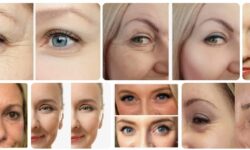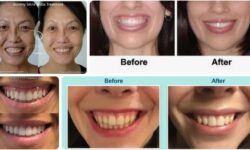Botox and Fillers: What’s the Difference?
Are you considering getting Botox or fillers to enhance your appearance? In the world of aesthetic medicine, these two treatments are incredibly popular for reducing wrinkles and adding volume to the face. In this blog post, we will explore the composition and function of both Botox and fillers, as well as how they are used in aesthetic medicine. By the end of this post, you’ll have a better understanding of the differences between the two and which option might be best for you. Let’s dive into the world of Botox and fillers!
Introduction To Botox And Fillers
Table of Contents
Botox and fillers are both popular treatments in the field of aesthetic medicine. They are often used to reduce the appearance of wrinkles and fine lines, providing a more youthful and rejuvenated look. However, there are some key differences between these two treatments.
 Firstly, let’s talk about Botox. Botox is actually a brand name for a neurotoxic protein called botulinum toxin. It is produced by the bacterium Clostridium botulinum. When injected into the muscles, it temporarily paralyzes or weakens them, preventing the muscles from contracting and causing wrinkles. Botox is most commonly used to treat dynamic wrinkles, which are caused by repetitive facial movements such as frowning or squinting.
Firstly, let’s talk about Botox. Botox is actually a brand name for a neurotoxic protein called botulinum toxin. It is produced by the bacterium Clostridium botulinum. When injected into the muscles, it temporarily paralyzes or weakens them, preventing the muscles from contracting and causing wrinkles. Botox is most commonly used to treat dynamic wrinkles, which are caused by repetitive facial movements such as frowning or squinting.
On the other hand, fillers are substances that are injected into the skin to add volume and fill in wrinkles and facial lines. They are typically made from hyaluronic acid, a naturally occurring substance in the body that helps maintain skin hydration and elasticity. Fillers can be used to smooth out static wrinkles, which are present even when the face is at rest. They can also be used to add volume to areas such as the lips and cheeks, creating a more youthful and plump appearance.
| Botox | Fillers |
|---|---|
| Paralyzes or weakens muscles | Adds volume to the skin |
| Treats dynamic wrinkles | Smooths out static wrinkles |
| Temporarily reduces muscle activity | Provides immediate results |
In terms of results, Botox typically starts to take effect within a few days and the results can last for several months. Fillers, on the other hand, provide immediate results that can last anywhere from several months to a year or more, depending on the type of filler used.
It’s important to note that both Botox and fillers should only be administered by qualified and experienced medical professionals. They should be used judiciously and tailored to each individual’s unique needs and desired outcomes. Consulting with a certified aesthetic practitioner is essential to ensure safe and effective treatment.
Composition And Function Of Botox
When it comes to enhancing our appearance and reducing the signs of aging, Botox and fillers are two popular options. While both treatments aim to rejuvenate the skin and minimize wrinkles, they differ in terms of composition and function. Botox, short for botulinum toxin, is a neurotoxic protein produced by the bacterium Clostridium botulinum. On the other hand, fillers consist of various substances, such as hyaluronic acid, collagen, or calcium hydroxylapatite, which are injected to add volume and fill in wrinkles.
Botox functions by blocking signals from the nerves to the muscles, preventing muscle contractions that cause wrinkles. It temporarily paralyzes or weakens the muscles and smooths out the skin’s appearance. It is commonly used to treat dynamic wrinkles, which occur due to repetitive facial movements, such as frown lines, crow’s feet, and forehead lines.
Fillers, on the other hand, work by plumping up the skin and filling in lines and wrinkles. They restore lost volume in areas like cheeks, lips, and temples, creating a youthful look. Fillers can also be used to reshape and augment certain features, such as the nose or chin. While Botox focuses on treating muscle-related wrinkles, fillers primarily address wrinkles caused by aging, sun damage, and loss of collagen and elastin in the skin.
- Both Botox and fillers are minimally invasive procedures that offer quick results and require little to no downtime.
- Botox effects typically last around three to four months, while fillers can provide results that last between six months to two years, depending on the type of filler used.
- It’s important to note that Botox and fillers should only be administered by experienced medical professionals, as incorrect placement or dosage can lead to unwanted side effects.
In conclusion, while Botox and fillers both aim to enhance the appearance and reduce wrinkles, they differ in composition and function. Botox blocks nerve signals to temporarily paralyze muscles and minimize muscle-related wrinkles, while fillers add volume and fill in lines and wrinkles caused by aging. Consulting with a qualified professional will help determine the best treatment option based on individual goals and needs.
Composition And Function Of Fillers
When it comes to non-surgical cosmetic procedures, fillers have gained significant popularity. Fillers are substances that are injected into the skin to restore its volume, smooth out wrinkles, and enhance facial features. Understanding the composition and function of fillers is crucial to making informed decisions about their use.
Fillers are typically made up of a combination of biocompatible substances, such as hyaluronic acid, calcium hydroxyapatite, poly-l-lactic acid, and polymethylmethacrylate. These substances are carefully selected to ensure safety and long-lasting results. Hyaluronic acid fillers, for example, are the most commonly used type and work by attracting and retaining water in the skin, thus adding volume and reducing the appearance of wrinkles.
Fillers can be used in various areas of the face, including the cheeks, lips, nasolabial folds, and under-eye hollows. They can also be used for non-facial areas such as the hands to replenish lost volume and improve skin texture. The function of fillers goes beyond simply filling in lines and wrinkles. They can also stimulate collagen production, leading to improved skin elasticity and overall rejuvenation.
It is important to note that the composition and function of fillers may vary depending on the specific brand or type. Different fillers have different consistencies and durations of effect. Some fillers may provide immediate results, while others may require multiple sessions to achieve the desired outcome. Consulting with a qualified and experienced cosmetic practitioner is essential to determine the most suitable filler for individual needs and goals.
Comparison Of Botox And Fillers In Aesthetic Medicine
When it comes to achieving a more youthful appearance and minimizing the signs of aging, Botox and fillers are two popular options in aesthetic medicine. While both treatments can help reduce the appearance of wrinkles and fine lines, they work in different ways and have different compositions.
Composition and Function of Botox
Botox, also known as Botulinum Toxin Type A, is a neurotoxin derived from the bacteria Clostridium botulinum. It is formulated as a purified protein and is commonly used for cosmetic purposes. Botox works by temporarily paralyzing the muscles that cause wrinkles, resulting in a smoother and more youthful appearance. It blocks the signals between the nerves and the muscles, preventing muscle contractions that lead to the formation of wrinkles.
Composition and Function of Fillers
Fillers, on the other hand, are substances that are injected into the skin to restore volume and fill in wrinkles and creases. They are typically made of hyaluronic acid, a naturally occurring substance in the body that helps maintain skin hydration and elasticity. Hyaluronic acid fillers, such as Juvederm and Restylane, are commonly used in aesthetic medicine. Fillers work by plumping up the skin and adding volume, thereby reducing the appearance of wrinkles and restoring a more youthful contour to the face.
Comparison of Botox and Fillers
| Botox | Fillers |
|---|---|
| Neurotoxin derived from Clostridium botulinum | Contains hyaluronic acid |
| Works by temporarily paralyzing muscles | Works by adding volume to the skin |
| Reduces the appearance of wrinkles by preventing muscle contractions | Reduces wrinkles by filling them in and restoring volume |
| Commonly used for dynamic wrinkles (wrinkles that appear with muscle movement) | Effective for static wrinkles (wrinkles that are present at rest) |
In terms of their applications, Botox is commonly used for dynamic wrinkles, such as frown lines and crow’s feet, which are caused by repetitive muscle movements. Fillers are more suitable for static wrinkles, such as smile lines and marionette lines, which are present even when the muscles are at rest.
It is important to note that both Botox and fillers should only be administered by trained and qualified professionals. Each treatment has its own potential risks and side effects, which can vary depending on the individual’s unique circumstances.
In summary, Botox and fillers are both effective treatments for reducing the signs of aging in aesthetic medicine. While Botox works by temporarily paralyzing muscles to minimize the appearance of wrinkles, fillers add volume to the skin and fill in creases. Understanding the differences between these treatments can help individuals make informed decisions about their aesthetic goals.
| Please Add a comment to this post Botox and Fillers: What’s the Difference? and we will forward your e-mail address to the operating clinics. We will contact you via e-mail. |
Botox is composed of a neurotoxin called botulinum toxin, which is derived from the bacterium Clostridium botulinum. It functions by blocking nerve signals in the muscles, resulting in temporary muscle paralysis. This, in turn, helps reduce the appearance of wrinkles and fine lines.
Fillers are typically made of hyaluronic acid, a substance that is naturally found in the body. They function by adding volume to areas that have lost elasticity and plumpness. This helps smooth out wrinkles, restore facial contours, and enhance the overall appearance of the skin.
Botox and fillers differ in their mode of action and the concerns they primarily address. Botox is commonly used to treat dynamic wrinkles caused by repetitive muscle movements, such as forehead lines and crow's feet. On the other hand, fillers are used to address volume loss, enhance lip volume, and fill in static wrinkles.
Most people experience minimal discomfort during Botox injections. The needles used are very fine, and some practitioners may numb the area with a topical anesthetic before injecting. Any discomfort is usually short-lived and well-tolerated.
The effects of Botox typically last around 3 to 6 months, after which the muscles gradually regain their movement. Fillers, on the other hand, can provide results lasting from 6 months up to 2 years, depending on the specific filler used and individual factors.
While both Botox and fillers are generally safe procedures, they do carry some potential side effects. These can include temporary redness, swelling, bruising, or mild discomfort at the injection site. In rare cases, more serious complications can occur, so it's important to consult a qualified professional and discuss any potential risks.
Both Botox and fillers are considered minimally invasive procedures, and there is typically no significant downtime or recovery period. However, some individuals may experience minor swelling or bruising immediately after the injections, which usually subsides within a few days. Patients can generally resume their daily activities immediately after the treatments.


